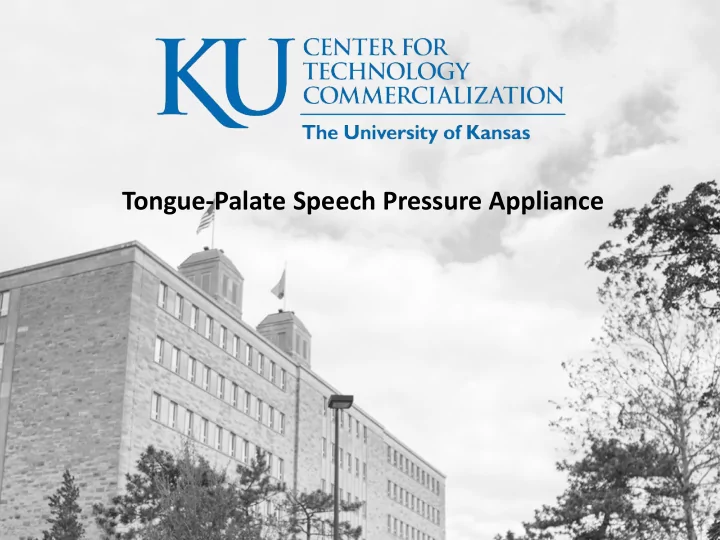

Tongue-Palate Speech Pressure Appliance
PURPOSES 1. Quantify contact pressure between the tongue and palate to better understand and diagnose tongue strength issues… a. During speech production b. During non-speech tongue movement such as maximum pressure capability c. During swallowing 2. Utilize tongue-palate pressure display as biofeedback for speech and swallowing exercise.
DEVICE FEATURES 1. Construction a. Custom molded retention system that is i. Inexpensive to make ii. Quickly fabricated on site without need for dental casting or special training iii. Easily customized to include small portions or the full palate depending on the situation iv. Thin and unobtrusive allowing quick adaptation by the user so that speech and swallow are undisturbed b. Pressure transducers that i. Can be positioned in a standard location and configuration on the palate or custom-selected positioning ii. have easily replicated positioning across multiple recording sessions iii. Response features that are suitable for measuring pressures that are static in nature (non-speech pressing) or that change over time (speech and swallowing)
DEVICE FEATURES 2. Pressure recordings that can be quantified in various ways: absolute peak, pressure pulse duration, area under the curve, etc. 3. Visual display of signal possible for biofeedback to the user.
POSSIBLE USES 1. Speech science research – better understanding of speech production process (data from non-speech disordered individuals has been successfully obtained) a. Expected magnitude of contact pressures during speech, swallow, non-speech maximum b. Contact pressure magnitude as a percentage of the physiological capability as a possible correlate of effort and eventual fatigue c. With multiple sensing locations, improved understanding of tongue contact over time an location on the palate 2. Speech-language pathology clinical practice a. Quantification of tongue strength during speech for diagnostic purposes (i.e., relative to normative data). Data available using this approach from two different speech-disordered populations. b. Quantification of tongue strength during swallowing for diagnostic purposes. Data on saliva swallows is available. c. Visual biofeedback for training increased (or decreased) tongue to palate contact strength during speaking and swallowing.
NEXT STEPS • Develop dedicated software for the device • Build a system to measure pressure of other aspects of speech • Looking for funding and research partners. • Technology available for licensing.
CONTACT INFORMATION KU has applied for a patent on this novel device. KU Innovation and Collaboration is seeking partnership to further develop and commercialize this technology To view images of the device and to have access to data obtained with the device or have any additional questions regarding the technology, please contact below to set up a conference call with the inventors kuctc@ku.edu
Recommend
More recommend